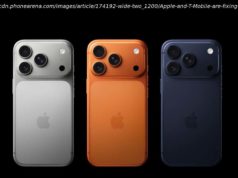Microsoft’s departing head of Windows Terry Myerson explained why Microsoft failed in the smartphone business.
In a farewell post on LinkedIn, Microsoft’s former head of Windows Terry Myerson explained why Microsoft failed in the smartphone business.
It comes down to two problems: Underestimating Android’s business model, and building on an older technical platform that wasn’t quite ready for the job.
« Looking back at this phase of my career, my biggest learnings were that success requires a special composition of business model, user experience, and technology, » Myerson wrote.
« We had a differentiated experience, but it’s so clear in hindsight that the disruption in business model which Android represented was enormous, and that building our early versions of Windows Phone on an incomplete Windows CE platform, designed for small embedded systems, left us too hobbled to ever catch up. »
Microsoft was one of the early players in the smartphone business with Windows Mobile, which was used by device makers including Motorola, Palm and others, in the mid-2000s.
When Apple introduced the iPhone in 2007, Microsoft was caught flat-footed. The interface was designed to be used with fingers (instead of a stylus), and had an advanced web browser and other features that made Windows Mobile look stale.
Microsoft scrambled to catch up with a new platform. But in the meantime, Google’s Android — which was able to duplicate many of the features of the iPhone — appealed to a wide number of third-party handset makers because it was free for them to use and customize.
At the same time, Microsoft began its phone revamp on an older platform called Windows CE, which had originally been built for « embedded » systems (like bank ATMs) and handheld organizers, then revamped to support Windows Mobile — without the advanced features that the iPhone and Android already had.
By the time Microsoft did all the work necessary to build a modern smartphone platform, Windows Phone, Android had already run away with most of the third-party market. Without a considerable market share, Windows Phone didn’t have the same attraction to develop for as iPhone or Android, so popular apps either launched on Windows Phone much later or, in most cases, never at all.
Windows Phone was eventually rebranded Windows 10 for Phones in 2015 before Microsoft announced development for the platform was finished in the fall of October 2017.






